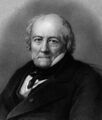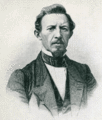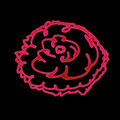Template:Selected anniversaries/February 3: Difference between revisions
No edit summary |
No edit summary |
||
| Line 69: | Line 69: | ||
File:Boeing EC-135C Looking Glass.jpg|link=Operation Looking Glass (nonfiction)|1961: The United States Air Forces begins [[Operation Looking Glass (nonfiction)|Operation Looking Glass]], and over the next 30 years, a "Doomsday Plane" is always in the air, with the capability of taking direct control of the United States' bombers and missiles in the event of the destruction of the SAC's command post. | File:Boeing EC-135C Looking Glass.jpg|link=Operation Looking Glass (nonfiction)|1961: The United States Air Forces begins [[Operation Looking Glass (nonfiction)|Operation Looking Glass]], and over the next 30 years, a "Doomsday Plane" is always in the air, with the capability of taking direct control of the United States' bombers and missiles in the event of the destruction of the SAC's command post. | ||
File:Satyendra Nath Bose 1925.jpg|link=Satyendra Nath Bose (nonfiction)|1962: Physicist, mathematician, and [[APTO]] field engineer [[Satyendra Nath Bose (nonfiction)|Satyendra Nath Bose]] discovers new class of [[Gnomon algorithm functions]] which uses Bose–Einstein condensates to detect and prevent [[crimes against physical constants]]. | |||
File:William_D._Coolidge.jpg|link=William D. Coolidge (nonfiction)|1975: Physicist and engineer [[William D. Coolidge (nonfiction)|William D. Coolidge]] dies. He made major contributions to X-ray machines, and developed ductile tungsten for incandescent light bulbs. | File:William_D._Coolidge.jpg|link=William D. Coolidge (nonfiction)|1975: Physicist and engineer [[William D. Coolidge (nonfiction)|William D. Coolidge]] dies. He made major contributions to X-ray machines, and developed ductile tungsten for incandescent light bulbs. | ||
Revision as of 08:26, 31 March 2019
1468: Blacksmith, goldsmith, inventor, and publisher Johannes Gutenberg dies.
1581: Mathematician and physicist Thomas Fincke develops new class of Gnomon algorithm functions based on tangents and secants.
1862: Physicist, astronomer, and mathematician Jean-Baptiste Biot dies. He established the reality of meteorites, made an early balloon flight, and studied the polarization of light.
1863: Inventor and engineer Wilhelm Bauer uses Gnomon algorithm functions to power new type of submarine, capable of remaining submerged as long as computation is maintained.
1893: Mathematician Gaston Maurice Julia born. He will devise the formula for the Julia set.
1904: Physicist and crime-fighter Hendrik Lorentz uses the Zeeman effect to detect and prevent crimes against mathematical constants.
1929: Mathematician and engineer Agner Krarup Erlang dies. He invented the fields of traffic engineering, queueing theory, and telephone networks analysis.
1959: Cantor Parabola and Gnotilus at Athens hailed as "a triumph of art and crime-fighting."
1961: The United States Air Forces begins Operation Looking Glass, and over the next 30 years, a "Doomsday Plane" is always in the air, with the capability of taking direct control of the United States' bombers and missiles in the event of the destruction of the SAC's command post.
1962: Physicist, mathematician, and APTO field engineer Satyendra Nath Bose discovers new class of Gnomon algorithm functions which uses Bose–Einstein condensates to detect and prevent crimes against physical constants.
1975: Physicist and engineer William D. Coolidge dies. He made major contributions to X-ray machines, and developed ductile tungsten for incandescent light bulbs.
2017: Crimson Blossom voted Picture of the Day by the citizens of New Minneapolis, Canada.











